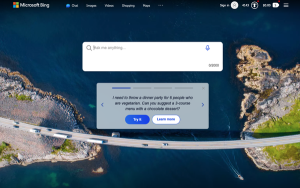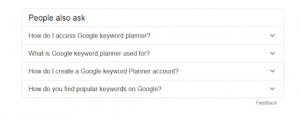I have 8.25 seconds to grab your attention. And that’s how long you have to get your customer’s attention online. Consumers value – times up! If that seems like an incredibly short amount of time to win attention, you’re right. If you take too long to get to the point and be interesting, you’ll lose the majority of your site visitors. Consumers value immediacy and relevance, and as a marketer you have to figure out how to give that to them without disrupting their experience.
Seventy-three percent of consumers actually prefer to do business with brands that personalize their experience. That makes sense. If you’re in a packed room at a networking hour, you’re much more likely to remember the person who read your nametag and greeted you by name rather than the people who just walked up and saying, “Hi, I’m so-and-so from such-and-such.” The same goes for the digital space.
To personalize your customer experience and capture attention, you need to learn more about your audience so you can deliver the most relevant messaging, content, and offers to them. That’s a critical component of personalization – taking a step back and actually listening what your customers have to say. I don’t mean in massive brand surveys or one-off product reviews. I mean actually asking customers on a continuous, one-to-one basis. Given that inaccurate inferred data is one of the biggest obstacles to successful personalization, this is a no-brainer.
Collecting user-provided data rounds out the other data points you have – referral source, device type, past purchases, location, and more – and gives you the opportunity to treat your customers as the unique individuals they are.
It might seem challenging to have these digital conversations with your audience, but that’s not the case. A great way to get started is with interactive content that helps you learn more about them while personalizing their experience. There are a few types of content that give you the opportunity to ask questions of your audience without interrupting their experience.
Personality Quizzes
Brands from Discover to Mattel to Unilever to The Boston Globe have used quizzes to learn more about their audiences. The quiz should be engaging, while still gathering the information you want. For example, Mattel ran a “Which Barbie Doll Are You?” quiz that asked a mix of fun, profiling questions and delivered a personalized result to everyone who took the quiz. Mattel learned about each quiz-taker and because of the profiling questions, could sort out qualified and unqualified consumers.
Digital Personal Shoppers
Consumers are busy – that’s why we only get seconds of their attention at a time. They want to find what they’re looking for quickly and if they don’t know exactly what they are looking for, they want to rapidly figure it out. Most eCommerce sites have a menu that lets consumers sort by various factors like color or size. While that feature helps narrow down a large product inventory, it doesn’t engage the shopper, save much time, or collect valuable data. Instead, sites can use a personal shopping feature that asks questions of the individual shopper and helps them efficiently navigate the site. It also gives them a custom selection – not just every article of clothing in their size, but every striped sweater in their size with a handful of coordinated accessories.
Graders and Calculators
Tools like graders and calculators give your potential customers the opportunity to learn from you as an expert. Your prospects input information about their current state and get customized feedback from you. HubSpot runs a website grader that gives real-time feedback on websites. Dell used a calculator to evaluate where potential customers had strengths and weaknesses in device security. Each time, the prospect enters information about their business and needs, enabling the brand to learn about them. In return for this information, the brand shares expertise and gives custom insights and recommendations.
Getting Started With Full-Stack Personalization
These exchanges with your consumers should complement other personalization efforts. Your remarketing emails should include custom product recommendations. Doing so better engages your customers and increases their likelihood of making a purchase. When shoppers come back to your site, you should be using web personalization software that greets them by name and remembers their recent browsed items and purchases. The possibilities for effective personalization should excite you, not intimidate you.
With the abundance of data indicating the increased ROI of personalization, there is no excuse for marketers to avoid it any longer. Consumers want to engage with their favorite brands; and the brands need to listen to them to make this interaction mutually beneficial. Start off with something easier, like custom product recommendations or a personality quiz, and work up to integrating personalization into your entire marketing stack. Your customers will love feeling listened to, and you’ll become a more informed marketer.
Digital & Social Articles on Business 2 Community(43)
Report Post



